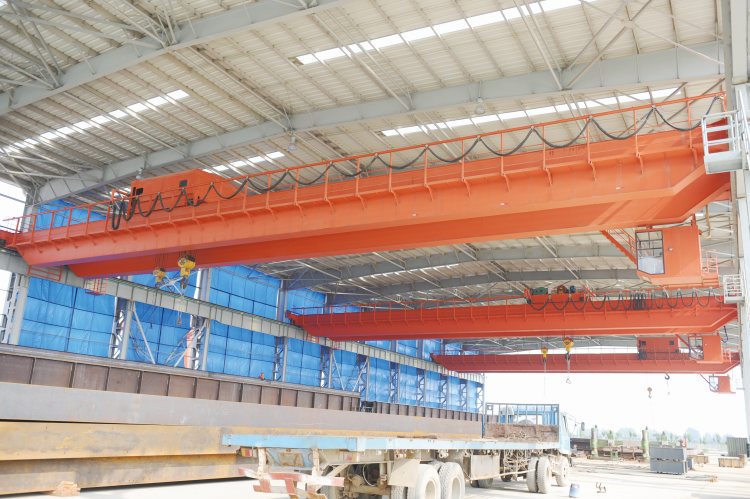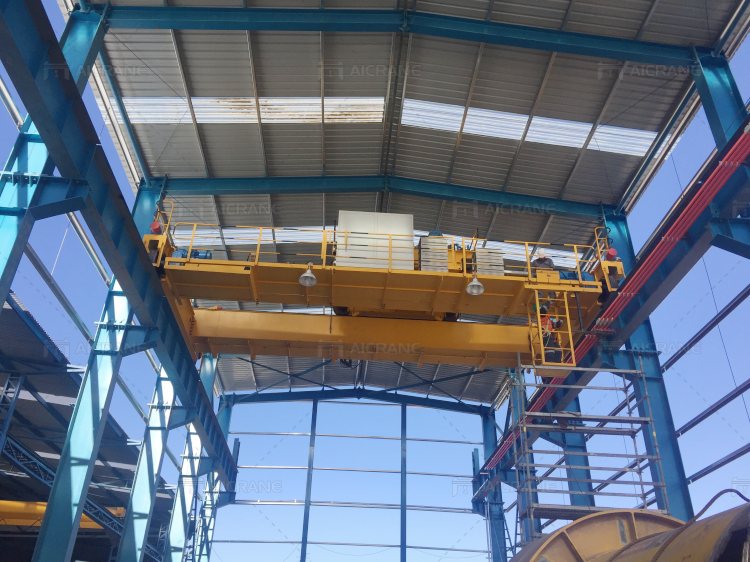In the realm of industrial lifting and material handling, overhead cranes serve as indispensable assets, facilitating the movement of heavy loads with precision and efficiency. Among these heavy-duty machines, 50 ton overhead cranes stand out for their remarkable lifting capacity, playing a pivotal role in various sectors, including manufacturing, construction, and logistics. In this article, we delve into the innovations shaping the future of 50 ton overhead crane technology, exploring advancements in design, automation, safety features, and sustainability.
Enhanced Load Handling
One of the primary areas of innovation in 50 ton overhead crane technology revolves around load handling capabilities. Manufacturers are continually refining crane designs to improve lifting efficiency, increase load capacity, and enhance operational flexibility. Advanced structural engineering techniques, such as the use of high-strength materials and optimized load-bearing configurations, enable cranes to lift heavier loads while maintaining stability and safety.

Moreover, innovations in hoisting mechanisms, such as variable frequency drives (VFDs) and regenerative braking systems, contribute to smoother and more precise load handling. VFDs allow for precise control of lifting speeds and acceleration rates, minimizing the risk of load sway and improving overall productivity. Regenerative braking systems harness energy generated during deceleration, converting it into usable power and reducing energy consumption.
Automation and Remote Operation
Automation is revolutionizing the operation of 50 ton overhead cranes, offering increased efficiency, productivity, and safety. The integration of automation technologies, such as programmable logic controllers (PLCs) and advanced sensors, enables cranes to perform complex tasks with minimal human intervention. Automated functions include precise load positioning, collision avoidance, and real-time diagnostics, enhancing operational efficiency and reducing the risk of accidents.
Furthermore, remote operation capabilities allow operators to control cranes from a safe distance, eliminating the need for personnel to be in close proximity to heavy loads. Remote monitoring systems provide operators with real-time feedback on overhead crane performance, allowing for quick adjustments and troubleshooting as needed. These advancements in automation and remote operation not only improve productivity but also enhance safety by minimizing the risk of operator fatigue and human error.

Safety Features and Collision Avoidance
Safety is paramount in overhead crane operations, especially when handling heavy loads in busy industrial environments. Innovations in safety features and collision avoidance systems are therefore a key focus of 50-ton overhead crane technology. Proximity sensors, laser scanners, and camera systems are integrated into crane designs to detect obstacles, personnel, and other potential hazards in the crane’s path.
Collision avoidance algorithms analyze sensor data in real-time, automatically adjusting crane movements to avoid collisions and ensure safe operation. In addition, emergency stop systems and redundant safety mechanisms provide fail-safe protection in the event of equipment malfunction or operator error. These safety features not only protect personnel and assets but also contribute to increased uptime and productivity by reducing the risk of accidents and downtime due to equipment damage. Overhead crane 50 ton adopts double beam overhead crane design due to its large lifting capacity.
Sustainability and Energy Efficiency
In response to growing environmental concerns, manufacturers are incorporating sustainability features into 50-ton overhead crane designs to reduce energy consumption and minimize carbon emissions. Energy-efficient motors, variable speed drives, and regenerative braking systems optimize power usage and reduce electricity costs during crane operation.
Furthermore, the use of lightweight materials and aerodynamic designs in crane construction helps minimize energy consumption and reduce the carbon footprint associated with manufacturing and transportation. Additionally, smart energy management systems allow operators to monitor and optimize crane energy usage in real-time, further enhancing sustainability and reducing operating costs over the crane’s lifecycle.
In conclusion, the future of 50 ton overhead crane technology is characterized by continuous innovation and advancement, driven by the need for increased efficiency, safety, and sustainability in industrial lifting operations. From enhanced load handling capabilities to automation, remote operation, safety features, and sustainability initiatives, manufacturers are pioneering new solutions to address the evolving needs of the industry. As these innovations continue to unfold, 50-ton overhead crane machines will play an increasingly vital role in shaping the future of industrial manufacturing, construction, and logistics, lifting the heavy loads of tomorrow with precision, efficiency, and sustainability.